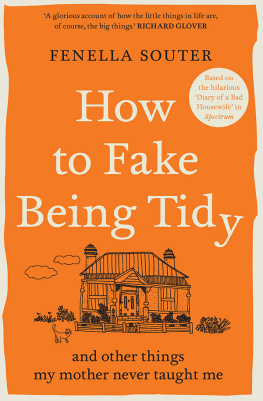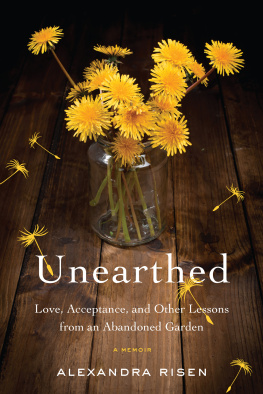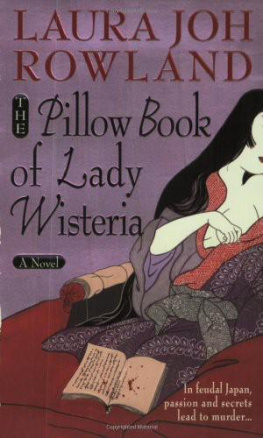HOUSE
with
WISTERIA
HOUSE
with
WISTERIA
Memoirs
of Turkey
Old and New
Halid Edib
With an introduction
by Sibel Erol
First published 2009 by Transaction Publishers
Published 2017 by Routledge
2 Park Square, Milton Park, Abingdon, Oxon OX14 4RN
711 Third Avenue, New York, NY 10017, USA
Routledge is an imprint of the Taylor & Francis Group, an informa business
Copyright 2003 by Nathan Altshuler and Mary H.B. Ulam.
All rights reserved. No part of this book may be reprinted or reproduced or utilised in any form or by any electronic, mechanical, or other means, now known or hereafter invented, including photocopying and recording, or in any information storage or retrieval system, without permission in writing from the publishers.
Notice:
Product or corporate names may be trademarks or registered trademarks, and are used only for identification and explanation without intent to infringe.
Library of Congress Catalog Number: 2009000219
Library of Congress Cataloging-in-Publication Data
Adivar, Halide Edib, 1885-1964.
House with wisteria : memoirs of Turkey old and new / Halide Edib ; with
an introduction by Sibel Erol.
p. cm.
Originally published: Charlottesville, Va. : Leopolis Press, c2003.
ISBN 978-1-4128-1002-9
1. Adivar, Halide Edib, 1885-1964. 2. Women authors, Turkish--Biography.
3. Women authors, Turkish--Biography. 4. Turkey--History--20th
century. I. Title.
DR592.A4A3 2009
956.102092--dc22
[B]
2009000219
ISBN 13: 978-1-4128-1002-9 (pbk)
This book was first published in 1926 by the Century Company of New York and London.
Its reappearance in this new edition after nearly eighty years is due to the initiative and generous support of Dr. Nathan Altshuler, Professor Emeritus of Anthropology at the College of William and Mary in Virginia.
The cover illustration is from a painting, Colorful Constantinople, by Alexandre Pankoff and was used as the frontispiece in the original Century edition. The photograph of Halid Edib on the inside front cover is used with the kind permission of Iletisim Publishers, Istanbul.
This book is a republication of Memoirs of Halid Edib retitled as House with Wisteria: Memoirs of Halid Edib. It is referred to in the following Introduction by its original title or as Memoirs.
By
SBEL EROL
Recent Turkish feminist scholarship has been rightly and productively focusing on discovering and documenting important and influential women of especially the last two centuries. Halid Edib (1884-1964) has never needed this kind of unearthing. Her accomplishments have openly been on national and international view because she was an important participant in the most significant historical developments of her day and because she left a strong record of these in her prolific output of both fiction and non-fiction in Turkish and English. was one of the secretaries of Sultan Abdlhamit. Halid Edib had a privileged education: she was educated at home till she attended the American College, continuously after 1899 following an initial brief try in 1893. At home she was taught Arabic, English and French. She knew Greek from growing up in a Greek neighborhood and from briefly attending a local Greek school. She was educated in eastern and western literature, religion, philosophy, sociology, exposed to the teachings of Durkheim and Comte through private tutors. She learned to play the piano. She was privy to intellectual circles of her day even as a child. She graduated from the American College in Istanbul in 1901 and got married right after graduation.
She seemed to be set for the typical life of a woman of her class after the birth of her two sons in 1903 and 1905. She also continued with her intellectual pursuits in reading and translating. She entered public life unexpectedly in 1908 by starting to write pieces on education and women for the revolutionary paper Tanin,
As a result of educational articles she was writing for Tanin, she attracted the attention of the education minister of the day, who offered her a job of reforming girls schools in Istanbul. She undertook this reorganization with Nakiye Hanm, who became a life-long friend and collaborator in educational projects. She also began to teach pedagogy, ethics and history at these schools. She only resigned from her job as a result of a disagreement with the central administration over the way of reorganizing mosque schools. Her work in education later continued when she went to Syria and Lebanon originally to inspect, and then to open schools and to reorganize the Aintoura orphanage. Upon her departure from Syria in 1918 as a result of the French occupation of the area, she began to teach western literature at the university (Darlfnun) in Istanbul before joining the independence movement and Mustafa Kemal Atatrk in Ankara in 1919. Later, she went back to teaching: she was a professor of En glish literature at Istanbul University from 1939 to 1950, and then again from 1954 till the end of her life.
After her divorce from her first husband, the mathematician and astronomer Salih Zeki, in 1910, Halid Edib lived even a more public life. She was very engaged in the cultural and political discussions of her day. Her living room was a place where cultural and national questions were discussed by the famous writers and intellectuals of the time. One of the most important discussions centered on the definitions of Turkishness and Turkism. She was deeply involved with the debates and programs at the cultural club Trk Oca (the Turkish Hearth) which opened in 1911 and which was active till 1924. In 1912, Halid Edib officially became the first female member. She was also active as a feminist. She helped found the feminist organization Taali Nisvan (Elevation of Women).
She developed as a public speaker through these activities to become a moving and powerful orator whose skills were splendidly displayed in her famous Sultanahmet speech delivered in 1919, in which, while urging the Turks to fight against the occupation forces (the British, French, Italians and the Greeks), she declared that only the governments were the enemies, but their people remained friends. It is interesting to read her evaluation and analysis of various people as public speakers in the memoir with this awareness of her future success as an orator, as someone who was often asked to speak extemporaneously.
Her nationalist activities against the occupation forces led the highest judge, the grand Mufti, to confer a death sentence on her. The other group trying to capture her were the British. In 1919, she left Istanbul with her second husband Dr. Adnan Advar, a fellow nationalist and head of the Red Crescent, whom she had married in 1917. In Ankara, Adnan Advar served as a close advisor to Mustafa Kemal Atatrk in the formation of the new Turkish government and opening of the National Assembly in 1920. He was the deputy speaker of the National Assembly and substituted for several ministerial posts. Halid Edib served as information and PR officer for the new government. She followed what was being said in the foreign press, translating articles from various newspapers as well as trying to represent and articulate the Turkish nationalist view to the world. She also served as a nurse in the battle front in Eskisehir in 1921, something which she had also done in Istanbul during the Balkan War of 1912-3. She was an official member of the military: she was first a corporal, and then a sergeant during the Turkish Independence War.











![Angela Pepper [Onbekend] - Wishful Wisteria (Wisteria Witches Mysteries - Daybreak Book 3)](/uploads/posts/book/140505/thumbs/angela-pepper-onbekend-wishful-wisteria.jpg)

